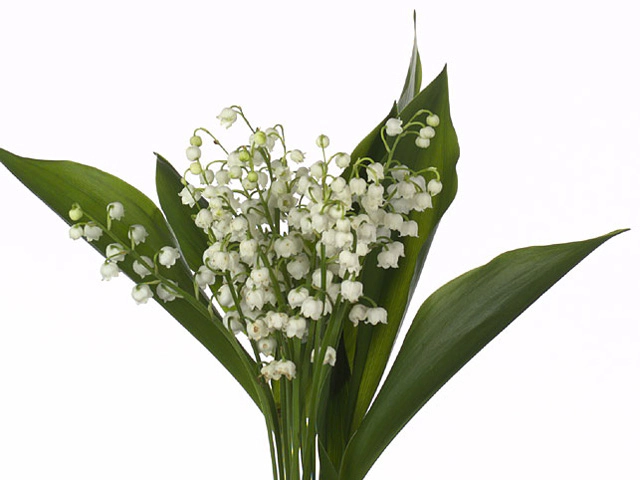Convallaria majalis

| Leaf tip | Pointed/acute |
| Fruit type | Berry |
| Leaf margin | Undulate |
| Flower scent | Normal |
| Leaf type | Foliage leaf |
| Winter hardness | Excellent (USDA-zone 1,2,3,4) |
| Flower color | White; White-white-999D |
| Leaf, general shape | Elongate |
| Inflorescence | Raceme |
| Structure (tissues) | Herbaceous |
| Light conditions | Semi-shades |
| Leaf division | Simple |
| Plant, growth type | Erect |
| Toxicity (if consumed) | Highly toxic |
| Moisture requirements | Moist |
| Soil type | Humus rich |
Lily-of-the-Valley, scientifically known as Convallaria majalis, is a delightful perennial plant that is known for its charming white bell-shaped flowers and sweet fragrance. This article will delve into the various characteristics and growing requirements of this beautiful plant.
One notable feature of Lily-of-the-Valley is its pointed or acute leaf tip. The leaves of this plant are elongate in shape and have an undulate margin, giving them a wavy appearance. These foliage leaves are deep green in color and add to the overall attractiveness of the plant.
The flowers of Lily-of-the-Valley are borne in racemes, which are elongated clusters of flowers that grow along a central stem. The flowers themselves are small and bell-shaped, exuding a normal floral scent. The color of the flowers is predominantly white, and they are often described as white-white-999D, indicating their pure white hue.
Lily-of-the-Valley is an herbaceous plant, meaning it has soft, non-woody tissues. This characteristic allows the plant to thrive in semi-shaded light conditions, making it an excellent choice for areas with partial sunlight. It prefers moist soil that is rich in humus, as this provides optimal growing conditions.
One aspect to consider when growing Lily-of-the-Valley is its winter hardiness. This plant demonstrates excellent cold tolerance, making it suitable for USDA zones 1, 2, 3, and 4. It can withstand harsh winter conditions and will re-emerge in the spring, ready to bloom once again.
While Lily-of-the-Valley may seem delicate and innocent, it is important to note that all parts of the plant, including the berries, are highly toxic if consumed. Therefore, caution should be exercised when planting it, especially if there are children or pets in the vicinity.
The fragrance and aesthetics of Lily-of-the-Valley make it a popular choice for gardens and floral arrangements. Its white flowers and sweet scent add a touch of elegance and grace to any landscape or bouquet. Additionally, its ability to thrive in shaded areas makes it a versatile plant for various garden designs.
In conclusion, Convallaria majalis, also known as Lily-of-the-Valley, is a captivating perennial plant that boasts beautiful white flowers, a sweet scent, and excellent winter hardiness. Its foliage and flower characteristics, along with its preference for semi-shaded light conditions and moist, humus-rich soil, make it a sought-after choice for gardens. However, it is crucial to be aware of its high toxicity if consumed. Overall, Lily-of-the-Valley is a remarkable and enchanting plant that adds charm to any landscape or floral arrangement.
Market availability index by month:
| Jan. | Feb. | Mar. | Apr. | May | Jun. | Jul. | Aug. | Sep. | Oct. | Nov. | Dec. |
|---|---|---|---|---|---|---|---|---|---|---|---|
| 1 | 2 | 1 | 4 | 1 | - | - | - | 1 | 1 | 1 | 1 |